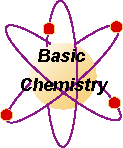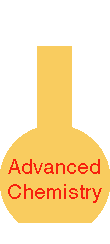Liesegang Rings
Purpose:
Knox gelatin is used to provide the substrate for making Liesegang Rings. Diffusion of one chemical will react with the substrate chemical to produce the rings over a period of several days. It takes about one (1) hour for the gelatin to set up. Here are three different ways to make the "Rings" in a large testube.
Materials:
- Cobalt (II) hydroxide
gel is 0.1 M Co(NO3)2 (29.1g). Mix 5 ml and 30 ml of hot 10% Knox gelatin (10 g gelatin to 100 ml water).
develop with 0.5 M NH3(aq) (3.4 ml). Add 10 ml to the surface of the firm gelatin.
- Silver chromate
gel is 0.1 M AgNO3 (17.0 g). Mix 5 ml and 30 ml of hot 10% Knox gelatin (10 g gelatin to 100 ml water).
develop with 0.2 M K2CrO4 (38.8 g). Add 10 ml to the surface of the firm gelatin.
- Silver chromate another way
gel is 0.1 M K2CrO4 (19.4 g). Mix 5 ml and 30 ml of hot 10% Knox gelatin (10 g gelatin to 100 ml water).
develop with 0.1 M AgNO3 (17.0 g). Add 10 ml to the surface of the firm gelatin.
Safety:
Co(NO3)2 is an oxidizer and can be a fire risk when in contact with organic material. It is also moderately toxic. Ammonia NH3(aq) is toxic by inhalation and ingestion, plus it is irritating to the eyes. Refer to MSDS sheets for more specifics.
Disposal:
For Co(NO3)2 dissolve in water and acidify with 6 M HCl. Add 3 fold excess of Na2S and stir for 1 hour. Adjust pH to 7 with 3 M NaOH to complete the metal sulfide precipitation. Separate sulfide by filtration and allow to dry. Place in a plastic container and bury in a landfill (Flinn #27f). Any liquid left over must be placed in 1M FeCl3 until a precipitate forms at which point it is neutralized with Na2CO3. The precipitate is filtered, dried, and disposed of in a landfill. Any solution left goes down the drain (Flinn #23). Ammonia is simply diluted with large amounts of water and poured down the drain.
Discussion:
Bands are formed because two different reactants diffuse into one another. Typically, ions from the solution on top of the gel in the test tube begin to diffuse in the gel. When their concentration becomes high enough (the ion product equals or exceeds the Ksp), the precipatate begins to form in the gel. The concentration of the ion which was incorporated in the gel is reduced around the crystals. This causes the ion from the gel to diffuse upward in the test tube. In other words, the ion moves from an area of higher concentration to an area of lower concentration. This movement reduces the concentration of the ions from below the crystals, and the ions from the solution above the gel diffuse through the region without forming crystals. (The ion product is less than the Ksp). Eventually the diffusing ions from the surface reach a region of high enough concentration again, and crystals form once more. This repeats until a limiting factor problem has been demonstrated.
This page is from a Woodrow Wilson workshop.
Back to top
Knox gelatin is used to provide the substrate for making Liesegang Rings. Diffusion of one chemical will react with the substrate chemical to produce the rings over a period of several days. It takes about one (1) hour for the gelatin to set up. Here are three different ways to make the "Rings" in a large testube.
gel is 0.1 M Co(NO3)2 (29.1g). Mix 5 ml and 30 ml of hot 10% Knox gelatin (10 g gelatin to 100 ml water).
develop with 0.5 M NH3(aq) (3.4 ml). Add 10 ml to the surface of the firm gelatin.
gel is 0.1 M AgNO3 (17.0 g). Mix 5 ml and 30 ml of hot 10% Knox gelatin (10 g gelatin to 100 ml water).
develop with 0.2 M K2CrO4 (38.8 g). Add 10 ml to the surface of the firm gelatin.
gel is 0.1 M K2CrO4 (19.4 g). Mix 5 ml and 30 ml of hot 10% Knox gelatin (10 g gelatin to 100 ml water).
develop with 0.1 M AgNO3 (17.0 g). Add 10 ml to the surface of the firm gelatin.
Discussion:
This page is from a Woodrow Wilson workshop.


